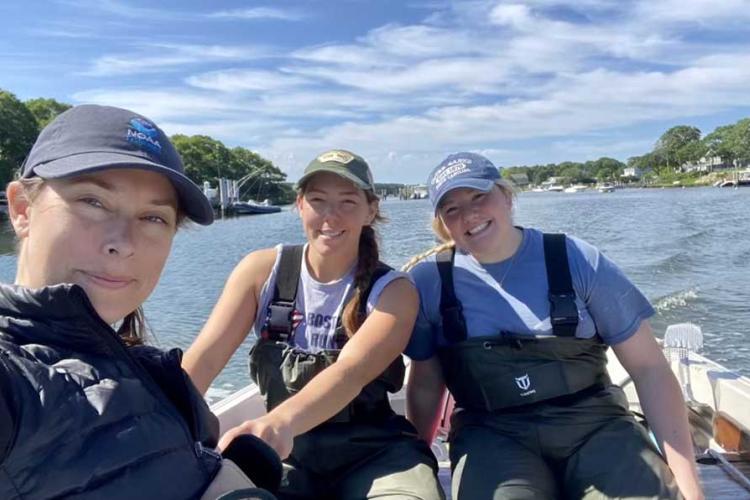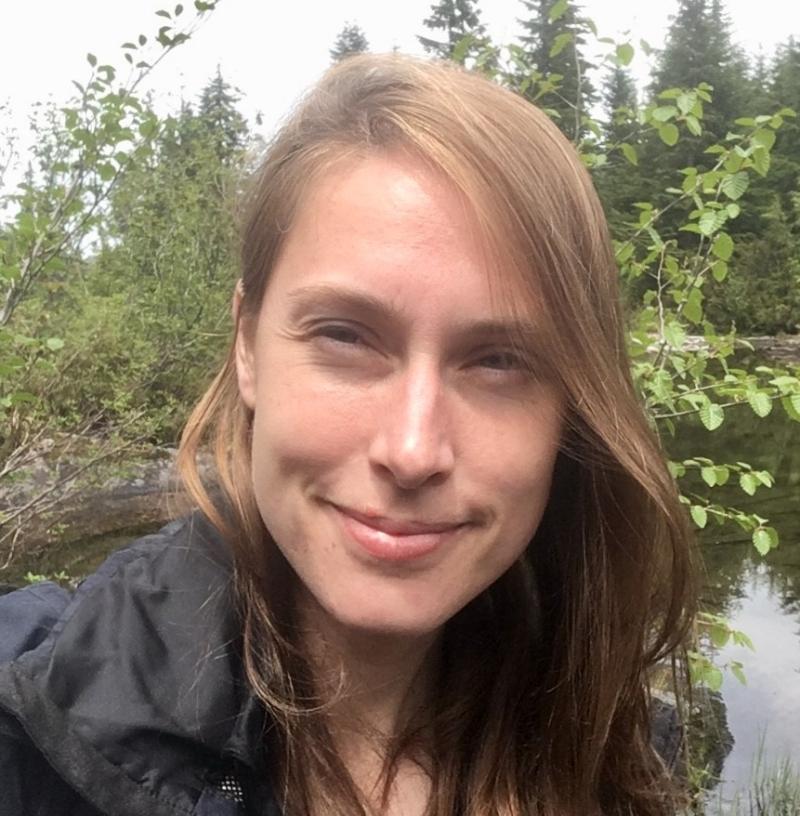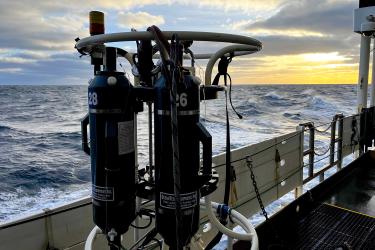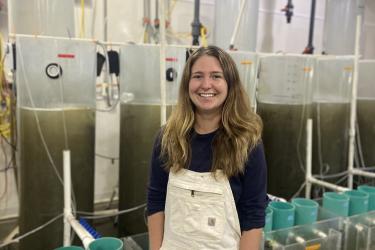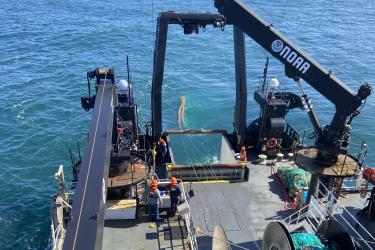Massachusetts Maritime Academy undergraduate students have been critical to our project investigating surfclam growth in a changing ocean. Over the past 2 years, students have been working with us on each trip, including seniors Shannen Allen and Crystal Santos. They captain a skiff, make sure our samples get collected, and keep our cages in ship shape. These are their stories.
A Sampling Adventure on East Dennis Sandbar
Shannen Allen
July 14, 2022
Location: Crowes Neck Pasture, East Dennis Massachusetts
Crystal and I met with our advisor, NOAA Fisheries research chemist Matthew Poach, at Crowes Neck in East Dennis, Massachusetts, at 5:00 p.m. Though it was still many hours from sunset, it seemed late to us because most of our other sampling this week was around sunrise, which in July is very early!
The weather was stormy this morning and it seemed as though we were going to have a small window of opportunity in the evening to get out and do our work before the rain came rolling in.
Usually when we visit this site in the summer we get to enjoy a sunny day on the beach. To get to our sampling site, we walk almost a quarter mile onto the sandflat, and from there we can barely see the waves breaking onto the sandflat on the horizon. On these days, it seems like you can see for miles. The shallow calm turquoise waters on the sandflat are perfect for a quick swim at the end of the day, and flocks of seagulls circle overhead and dip into the water to catch fish when the tides change. The oyster farmers and their plots dot the sandbar. They are often hard at work scraping barnacles off of their crop. The recreational fishermen are out in the shallow channels that cut through the sandbar fishing for striped bass. The expanse of the tidal flat also makes the bright orange and hot pink sunrises and sunsets feel huge and out of this world.
When we got to the beach it was sunny but a storm was visible out over the water. The radar indicated a storm was moving away from us so we walked out to the site. It was eerie when we got there because everything was very quiet and calm. The sky turned a dark gray, and everything but the wind was silent. This seemed unusual to us, but we decided to stay at the site to collect samples because there was no wind or rain.
We began drawing seawater from within the sand using a syringe to take samples from varying depths (2 cm, 5 cm, 10 cm, 15 cm, and 20 cm). This would allow us to measure pH and alkalinity of the seawater in the sediment surrounding the surfclams.
Then all of a sudden, the sky turned completely black, like in The Wizard of Oz before Dorothy was taken to Oz. Being out on this sandflat, we could see the clouds for miles. The wind came out of nowhere at such an extreme pace that it looked like the moored boats in the distance were getting pushed up onto the sand from the strong wind and waves. It usually doesn’t take very long to collect this set of samples, but on a day like today everything seemed to be moving slower than normal, in a situation that called for haste. That was when Matt decided that we needed to call it a day before the weather deteriorated further.
As we were walking back, we got pelted by the rain and sand. With no trees or houses to block the wind, it felt like getting pelted with hail! Matt showed off his 5K running skills on this day— he ran back to the car pulling the cart that held our seawater sampling gear. We did not want to take our chances with getting caught out in this sudden storm with a metal carriage! I have never experienced such a fast-acting and powerful storm!
My Multi-Generational Connection with Cape Cod Clams
Crystal Santos
September 10, 2022
Location: Provincetown Coast Guard Station, Massachusetts
I am Crystal Santos, a non-traditional student currently studying marine science, safety, and environmental protection at Massachusetts Maritime Academy in Buzzards Bay, Massachusetts.
Growing up on Cape Cod, many of my favorite early memories involve being out on the boat with my parents, and watching the sunrise as they were clamming. My parents supported our family through commercial shellfishing, primarily soft-shell clams, quahogs, and bay scallops. When I brought my 10-year-old daughter, Jaelyn, along while participating in this internship, it occurred to me that life has come full circle. Seeing my daughter's face light up, being engaged in science and eager to learn while having so much fun, has been a great gift and a proud parent moment.
Participating in the biodeposition experiment segment of this research project has been the most memorable and exciting experience to date. This year, our group measured clam feeding rates at sites in both Provincetown and Falmouth, Massachusetts. To measure feeding rates, we place the clams into a device that sends flowing seawater over them. We collect seawater samples and the clams’ feces and pseudofeces, or strings of particles rejected by the clam, over the course of a couple of hours. We use a filtration system, similar to a coffee filter, to filter out the larger particles in the sample, while the water flows through the filter.
We bring these filters back to the lab to measure how much of the material in the samples is digestible (organic carbon-based material) and how much isn’t (inorganic material, such as grains of sand suspended in the water). We then use these measurements to find out how much seawater the clams filtered and how much material they consumed.
While on the pier, I filtered the water samples, recorded data, and packaged and stored the samples in a cooler. Both feces and seawater samples are concentrated on a filter using a vacuum so that the organic and inorganic matter in these samples can later be weighed. Multiple water samples needed to be filtered every 15 minutes for 2 hours. It was like rapid fire trying to keep up this relay, and I enjoyed the challenge.
To estimate feeding rates, we need to know the amount of time it takes for food to travel through the gut of the clams. To measure this time interval, we feed the clams food composed of a bright green species of algae. The amount of time it takes for the feces to change to bright green tells us how long it has taken for this new food source to travel through the gut. Jaelyn was a great assistant, carefully monitoring the clams throughout this process. She was even the first one to observe this color change indicating the change in food source!
